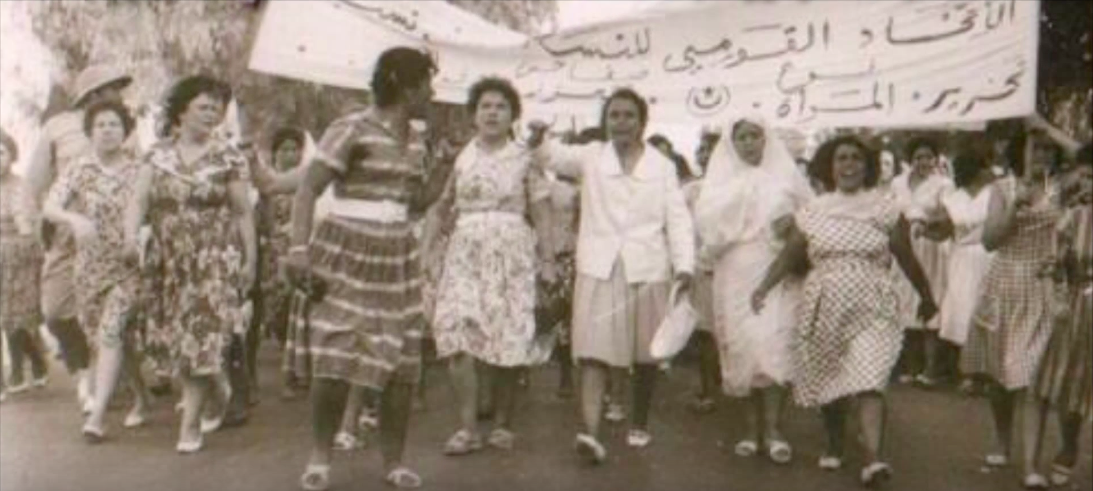Second generation of feminists
After the Arab defeat in the Six-Day War, a second cycle of Lebanese feminism emerged. The disappointing defeat elicited a critique of nationalist ideologies and gave rise to leftist feminism. Women’s organisations at the time were mostly concerned with humanitarian work, which was encouraged by Fouad Chehab’s reformist policies. Despite the separation that transpired on an organisational level between women’s organisations and political parties, the former remained affiliated with the latter’s ideologies. For example, al-Tajammou al-Nisa’i al-Dimocrati al-Lubnani (the Lebanese Democratic Gathering of Women – LDGW) was affiliated with Munazamat al-‘amal al-Shuyu’i (the Organisation of Communist Action – OCA) and al-Ittihad al-Nisa’i al-Taqaddumi (the Progressive Women’s Union) was connected to the Progressive Socialist Party (PSP).
Overall, political tension shaped this second wave of feminism, resulting in the feminist agenda’s focus shifting from women’s rights to alleviating the ramifications of political violence of the Lebanese Civil War (1975-1990). Hence, charitable work, refugees, and war victims became the focal areas of activism for women’s organisations. Those who study the Lebanese feminist movement identify this period as a phase in which the movement went back to its “pastoral functions.”1)Fahima Charafeddine, “Predicament of Lebanese Women Married to Non-Lebanese,” UNDP, 2009, p.12, available at: http://www.undp.org.lb/communication/publications/downloads/mujaz_en.pdf (last accessed 18 January 2018).
In summary, this second generation of feminists strived for expanded political rights, notably suffrage. Yet, women’s organisations were unable to uphold and mould the values they defended into their discourse, which continued to be aligned with the sectarian system. Moreover, female identity continued to be associated with national identity and with the absence of influence on decision-making processes.


